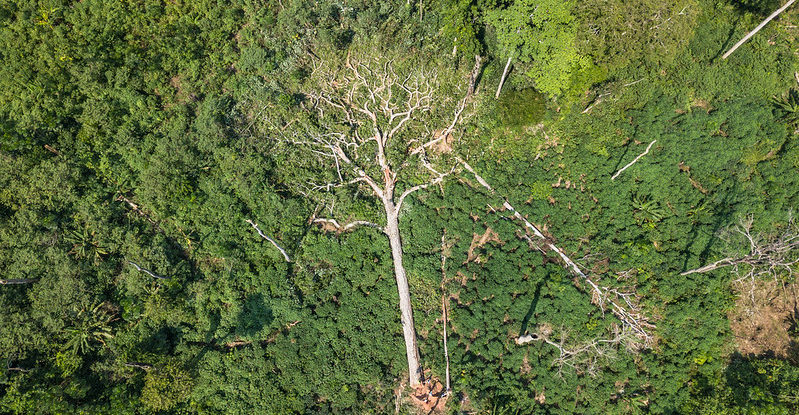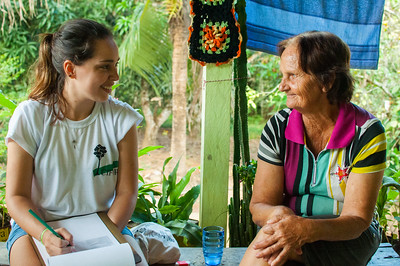The world’s second largest tropical rainforest is situated in the Congo Basin in the center of Africa. This lush region is home to more than 10,000 flora and fauna species according to the World Wildlife Fund (WWF). These include endangered mountain gorillas, bonobos, chimpanzees and forest elephants. The unique ecosystem plays a vital role in climate regulation, absorbing greenhouse gasses, storing carbon in the soil and the trees. But like many other carbon-rich ecosystems worldwide, its survival is also threatened.
The Congo Basin spans six countries, including Cameroon, Central African Republic, Republic of Congo, Equatorial Guinea, Gabon, and its biggest territory lies in the Democratic Republic of Congo (DRC).
“DRC has the largest forest cover in the Congo Basin and in Africa, but it is also one of the poorest economies in the world, thus it faces enormous challenges in managing and protecting its forest,” said Blaise-Pascal Ntirumenyerwa Mihigo, professor of law at DRC’s University of Kinshasa who also works with CIFOR’s Global Comparative Study on REDD+.
While this ecosystem remains relatively untouched compared to the Amazon and other rainforests, it faces increasing pressure as more than 40 million people live in and around it. Economic and infrastructure development to support the growing population have led to unsustainable forestry, farming and mining practices in the DRC, Mihigo said.
This has led to an 8 percent decrease in tree cover since 2000, according to Global Forest Watch.
Nevertheless, there are promising developments in Congo Basin’s conservation efforts — the latest being the agreement between DRC and the Central African Forest Initiative (CAFI) to mobilize $500 million funding for forest protection between 2021-2031 in the DRC.
“This is one of the most important developments for DRC during the COP 26 summit in Glasgow,” said Mihigo.
Yet, a lot needs to be done to mobilize the funding, as the Letter of Intent addresses vital issues in forest protection and management, such as adaptation and implementation of tenure law and policy; transparency by actors involved in the forest protection; inclusion of the private sector; enhanced coordination and synergy with partners and respect for vulnerable groups including women.
Listen to our latest podcast to hear more about this topic.
Related publication:
Read also:
 Boost funding and strategically align incentives with climate goals to save forests
Boost funding and strategically align incentives with climate goals to save forests
 COP26 deforestation pledges a win, but only if they are upheld
COP26 deforestation pledges a win, but only if they are upheld
We want you to share Forests News content, which is licensed under Creative Commons Attribution-NonCommercial-ShareAlike 4.0 International (CC BY-NC-SA 4.0). This means you are free to redistribute our material for non-commercial purposes. All we ask is that you give Forests News appropriate credit and link to the original Forests News content, indicate if changes were made, and distribute your contributions under the same Creative Commons license. You must notify Forests News if you repost, reprint or reuse our materials by contacting forestsnews@cifor-icraf.org.




